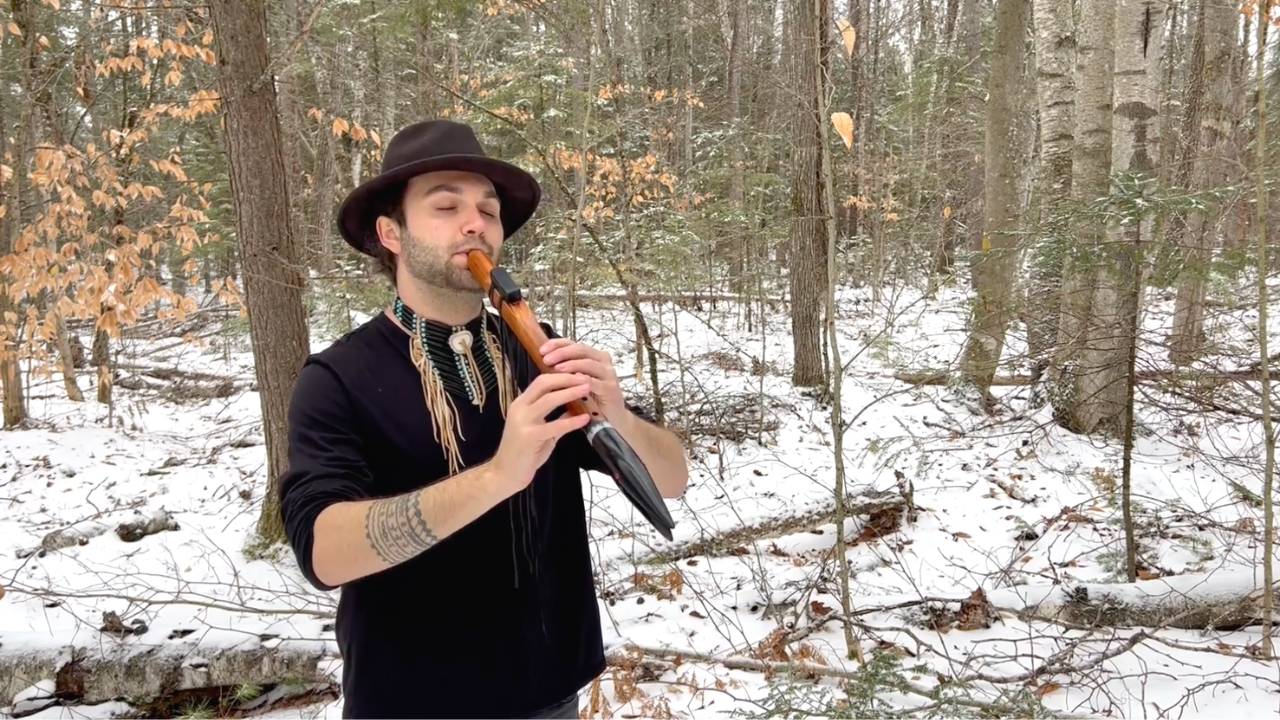The Native American Style Flute & Your Sound Healing Practice
May 31, 2023
The world of sound healing knows no bounds, and so are the sound healing instruments we can use to work with the power of their healing sounds.
In this article, we connected with sound healing practitioner Gareth Laffely. A Native American composer, producer, Gareth shares with us how to introduce the Native American style flute into your sound healing sessions, its history and much more.
The History Of The Native American Style Flute
Native American flutes are an evolution of sound shaped over the past 3,000 years. In North America, one of the oldest flutes is the Anasazi flute of the American Southwest.
As history unfolded, flutes became known in many Native American tribal cultures, from elderberry flutes of the Penobscot tribes in Maine to the courtship flutes of the Great Plains, many distinct sounds emerged. Flutes were made by hand, and each flute had a unique tuning that depended upon the size of a flute maker’s hands and forearms.
The Native American flute has been refined into a standardised instrument with many healing benefits. Most flutes are now tuned to the minor pentatonic scale at 440hz or 432hz.
The Native American Style Flute & Your Sound Healing Practice

The beautiful Native American style flute can be used for meditation and relaxation and can also be a powerful tool to integrate into your sound healing practice. The following three sections highlight how to introduce this special flute into your healing sessions through transitions.
Client Connection
During the beginning of a 1-2-1 sound healing session with a client, perhaps the most crucial step is the client connection.
Sometimes, especially if it’s a new client, there can be some hesitation or a barrier to connecting. Introducing the flute to this part of the session can help relax the client while allowing the sound healing practitioner to observe how the client responds to sound.
Here are two steps to try:
1. Have your client sit or lay down & invite them to close their eyes and take several deep breaths
Using breathwork in a session has a number of benefits, including the following:
- Reducing anxiety and depression
- Lowering heart rate
- Promoting wellness and wellbeing
There is a pattern of breathing that can be used here called “3-4-5 breathing.” Invite the client to breathe in to the count of three, hold their breath to the count of four, and breath out for the count of five. Have them repeat this pattern several times.
As the client begins breathing, softly start playing your Native American style flute next to their body (2-3 feet away). And now, pay attention to how they respond? Do they tense up? Do they begin to change their breathing into a more relaxed state?
Continue observing the 3-4-5 pattern of breathing, and time several slow flute melodies with their 5-second exhale. This helps the client stay focused on their breath while feeling a musical accompaniment to their release. Once you see the client’s muscles relax, lay down your flute and begin the client connection process.
2. After the client connection, play the same style melody on the flute as you begin to transition into the rest of the healing session
Transitioning To Other Instruments
During a 1-2-1 sound healing session or a sound bath, multiple instruments will often be used within a short timeframe.
Treat the flute as a guide that takes clients on a journey and walks with them on the sound path you paint with your healing instruments. Allow the flute to start a session, playing a simple melody for 2 to 5 minutes, and then begin using your other instruments.
If, for example, you are about to switch from a gong to tuning forks, play the same familiar melody on the flute as you move from one instrument to another. The consistency will help to keep clients grounded and engaged. Since flutes are lightweight and portable, they can easily be played while walking around a healing space. Flutes can also be played with one hand, so they can be used while striking a singing bowl or gong.
Ending A Sound Healing Session
At the end of a sound healing session, the flute can be a wonderful way to re-energise clients.
If a client is in a deeply relaxed state, the flute may be used to create a cheerful melody to slowly increase their awareness. After playing the flute for 2 to 5 minutes, other grounding instruments (such as a shaker or ocean drum) can be used to bring the session to a close.
Final Thoughts
“The flute is perhaps the greatest way to convey emotion in a healing session. You can visibly notice a change in people as you pour your breath into the flute, listening to its song. In my years as a hospice volunteer, I have seen firsthand the amount of peace that this instrument can bring, and I strongly encourage others to allow the Native American style flute to speak through them too.” - Gareth Laffely, Sound Healing Practitioner
There are many applications for using the flute in a sound healing setting. Some possibilities include the following:
- Nursing
- Healthcare work
- Teaching
- Working with children
- Working with animals
- Sound baths
If you are interested in learning more about the Native American Style Flute, you can sign up to our Short Online Sound Healing Course, The Native American Style Flute - An Introduction!
What To Read Next:
Subscribe To Our Newsletter
Join our newsletter for exclusive insights, tips, and updates on the latest news in sound healing to enhance your wellbeing!
SPAM is a NO-NO! We will never sell your information, for any reason.


